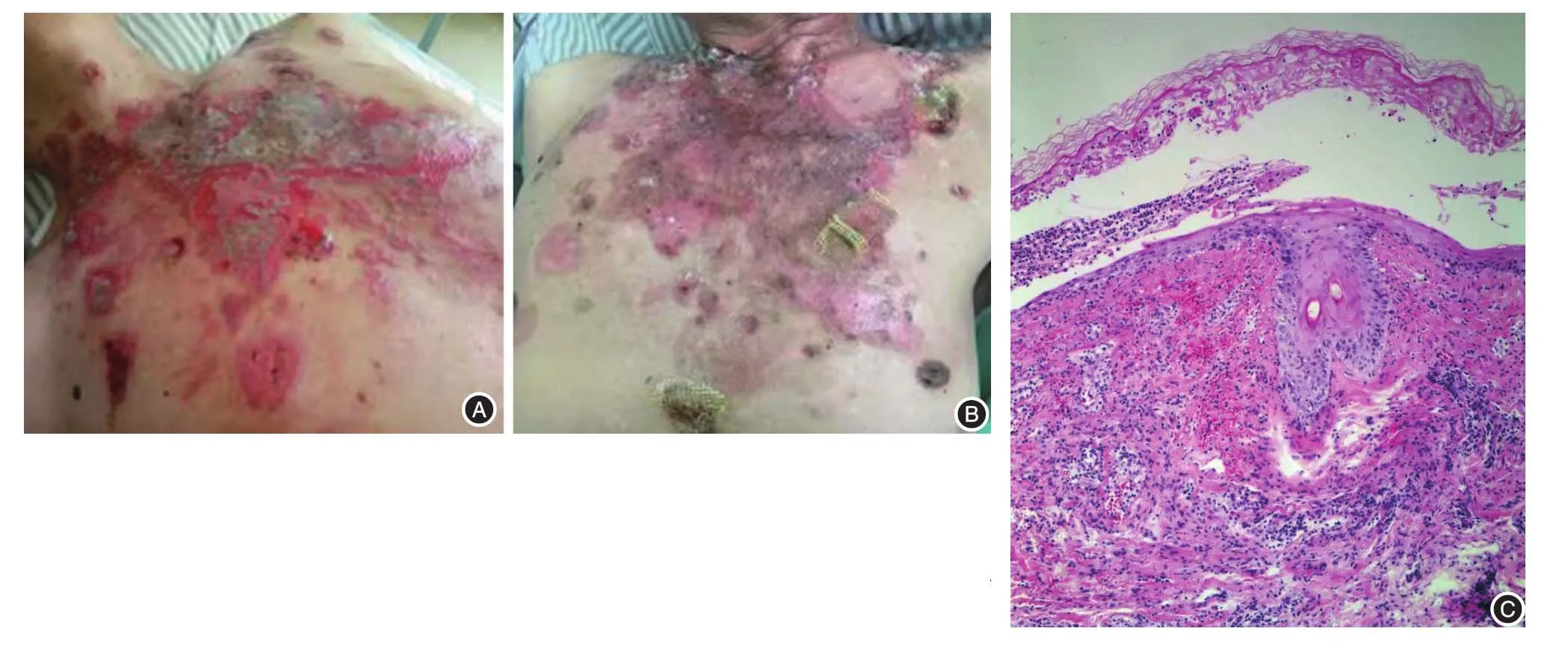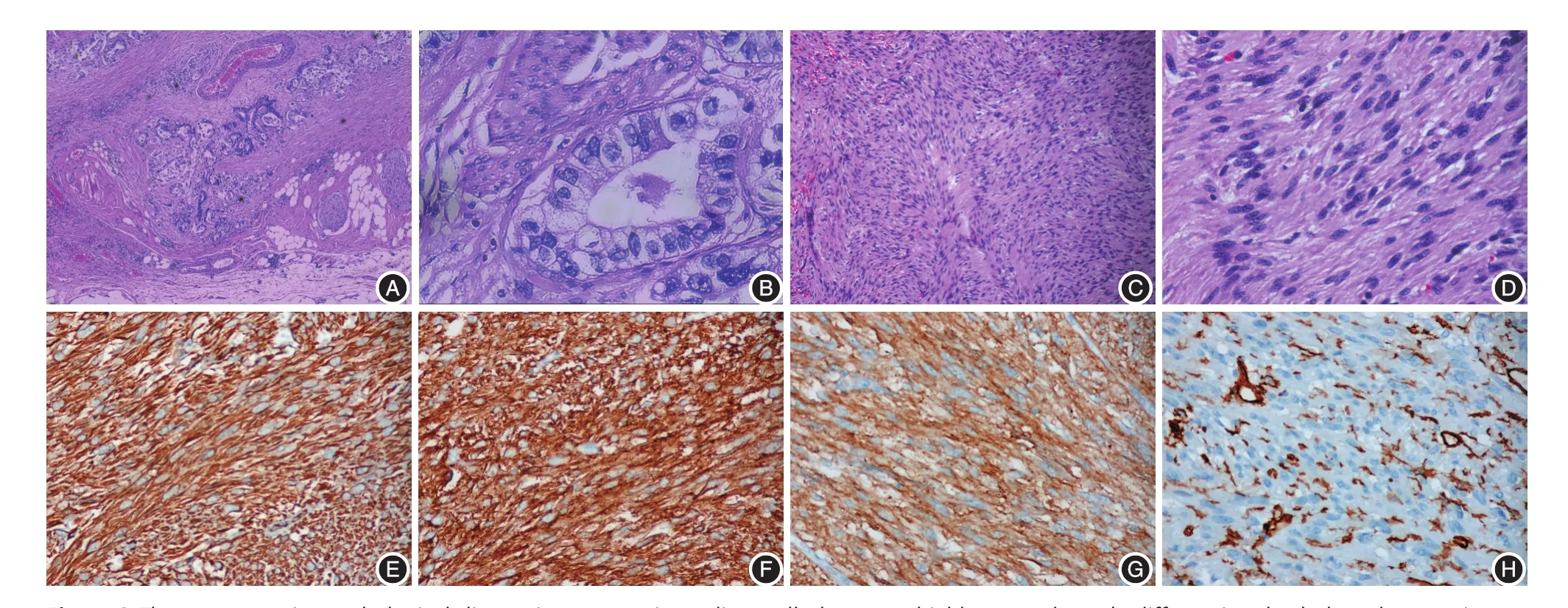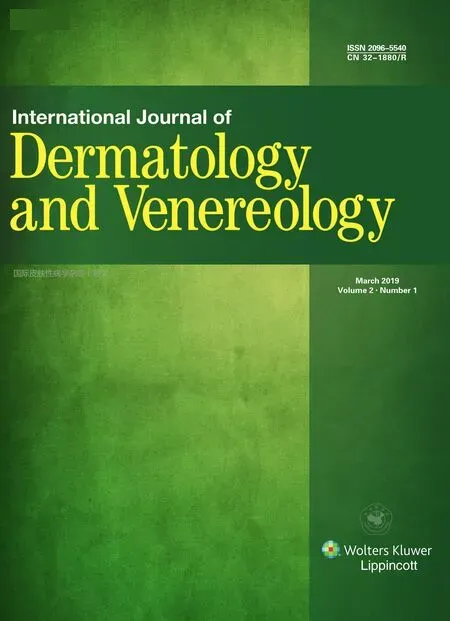Paraneoplastic pemphigus comorbid with cardiac cancer and duodenal gastrointestinal stromal tumors:a rare case report
Yuan Guo,Hui Xu,Yu-Tian Cai,Ning-Ning Guo,Lu-Yuan Wang,Yu-Mei Li*
1Department of Dermatology,the Affiliated Hospital of Jiangsu University,Zhenjiang,Jiangsu 212001,China.2Laboratory for Regeneration Medicine in Jiangsu University,Zhenjiang,Jiangsu 212001,China.
Introduction
In 1991,Anhaltet al.[1]first described a rare form of atypical pemphigus that was associated with lymphoproliferative disease.In 1999,Zhuet al.[2]reported the first case of paraneoplastic pemphigus(PNP)in China and then demonstrated the mechanism by which reactive autoantibodies in PNP were produced by the cells of associated tumors.
Cases of PNP in association with other malignancies such as breast cancer,colon cancer,and bladder cancer have since been reported.Basiret al.[3]also reported cases of pemphigus with gastric cancer.PNP may involve the mucous membranes of the esophagus,stomach,duodenum,and intestines[4].However,PNP comorbid with cardiac cancer and duodenal gastrointestinal stromal tumor has not been reported.We herein report such a rare case with its treatment.
Case report
A 75-year-old man presented with a 3-month history of gradually increasing vesicles and erosion on the buccal mucosa and truncal and perianal skin.He developed bodily pruritus on 13 April 2017.The skin was prone to rupture after scratching,and the erosions on the skin surface did not readily heal.Ten days later,erythema and blisters began to appear on the trunk.These lesions readily broke open,forming an erosion on the surface.They did not heal well,and some unbroken blisters converged together.No pustules were present.
The patient was treated with methylprednisolone at 40 mg once daily,tripterygium glycosides at 20 mg three times daily,roxithromycin at 0.15 g twice daily,3%sodium bicarbonate solution used as a mouthwash,and desonide cream for topical use.The condition remained uncontrolled,and new blisters continued to appear on the trunk and extremities.The patient denied a history of drug allergy and family disease.His parents were not close relatives.The physical examination showed that the patient was basic healthy.Dermatological examination showed that blisters of various sizes containing clear fluid were present on the palate and cheek mucosa,lip,chest,back,inner thigh,and perianal region(Figure 1A and 1B).Nikolsky’s sign was positive.Results of laboratory tests were as follows:(1)Histologic examination of biopsy sample from the chest showed suprabasal acantholysis with bullous cleft formation and the necrosis of cells,which was compatible with pemphigus(Figure 1C).(2)Direct immunofluorescence showed reticular deposition of IgG and C3 among the spine intercellular,and interruption of indirect immunofluorescence indicated a negative result.(3)The anti-desmoglein 1 and 3 antibody levels in blister fluid were both>150 U/ml.(4)Upper digestive tract radiography showed cardiac cancer invading the abdominal esophagus and small upper part of the stomach, and gastroscopy and histopathological examination showed poorly differentiated cancer of the gastric cardia accompanied by the duodenal stromal tumor.Combined the clinical features and laboratory tests,we made the diagnosis of PNP with cardiac cancer and duodenal gastrointestinal stromal tumor.

Figure 1 Clinical pictures and pathological biopsy of the lesions.A:The trunk exhibited erythema and blisters.The fluid within the blisters was clear.The blisters ranged in size and were easy to break,forming an erosion on the surface.They did not readily heal,and some unbroken blisters merged to form larger blisters.No pustules were present.B:Five days after the operation,the patient’s wounds showed substantial healing.C:Pathological biopsy of lesions on the left back showed pemphigus(H&E,×100).
Radical gastrectomy was performed for treatment of gastric cardia on 24 April,2018,and the postoperative pathological diagnosis was gastric cardiac small ulcer type moderately to highly differentiated tubular adenocarcinoma with invasion of the serous layer.Metastasis was found in the lymph nodes along the small and large curvatures of the stomach.Immunohistochemical examination revealed a duodenal stromal tumor considered to be of low risk(4-cm tumor diameter and<5 mitoses per 50 high-power fields)(Figure 2).During hospitalization,the patient was given immunoglobulin at 2.5 g/day.Five days after the operation,the patient’s skin wounds showed substantial healing.His general condition was improved due to the successful radical duodenal gastrectomy.

Figure 2 The postoperative pathological diagnosis was gastric cardia small ulcer type highly to moderately differentiated tubular adenocarcinoma with invasion of the serous layer accompanied by a duodenal stromal tumor that was considered to be of low risk(4-cm tumor diameter and<5 mitoses per 50 high-power field).A and B:gastric cardia small ulcer type tubular adenocarcinoma.A:H&E,× 40;B:H&E,× 400.C and D:duodenal stromal tumor,C:H&E,×40;D:H&E,×400.Immunohistochemical staining(IHC,×400)of the duodenal tissue showed vimentin(+)(E);Dog-1(+)(F);CD117(+)(G);and CD34(+)(H).
Discussion
PNP is an autoimmune syndrome that is always associated with a hematologic malignancy such as non-Hodgkin’s lymphoma,follicular dendritic cell sarcoma,thymoma,or chronic lymphocytic leukemia.It is featured by severe mucosal erosions and polymorphic lesions[5].Various hypotheses for the mechanism of PNP development have been proposed,for example:PNP-associated tumors are known to secrete antibodies that react with epidermal cells,causing mucosal and skin damage.Amongg patients with PNP,the HLA susceptibility gene is CW*14 in Chinese,while is HLA-DRB1*03 in foreign country[6].The mortality rate of PNP ranges from 75%to 90%,and respiratory failure is the main cause of death[7].The treatment approach principally involves suppressing the patient’s immunity and avoiding infection.Unfortunately,the therapeutic effect is generally unsatisfactory.
Notably,gastrointestinal stromal tumors of the duodenum are rare in general,and PNP patients with both cardiac cancer and duodenal gastrointestinal stromal tumors have never been reported.However,low-grade duodenal stromal tumors can be cured by laparoscopic duodenectomy[8].In the present case,our comprehensive diagnostic and surgical approach was successful.The patient’s blisters and wounds eventually healed,and his overall condition was improved. In short, appropriate diagnosis and treatment of the specific cancer is vital for associated PNP.
Acknowledgments
The work was supported by the National Natural Science Foundation of China(No.81573053),the Training Funding Project(“333 Project”)of Jiangsu Province(No.BRA2015196),and the Seventh Batch of Science and Technology Plan in Zhenjiang(No.SS2015024).
- 國(guó)際皮膚性病學(xué)雜志的其它文章
- Reactive perforating collagenosis
- Sun?protection knowledge and strategies of Chinese dermatologists:a nation?wide,questionnaire?based survey
- Initial presentation of acute myeloid leukemia in a patient with cutaneous myeloid sarcoma
- Persistent papules with adult?onset Still’s disease:a case report
- Primary vulvar melanoma in a 27?year?old pregnant woman:a case report and literature review
- Cutaneous plexiform schwannoma in the right thigh after trauma

